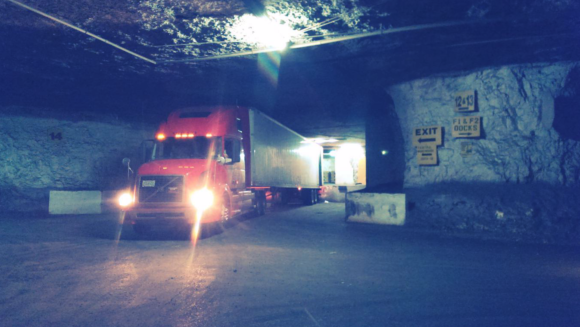Interstate Underground Warehouse & Storage operates more than 3 million square feet of storage space inside a cave that was once a limestone mine just outside of Kansas City, Mo.
The company’s website touts the constant 60-degree temperature inside its storage facility, which is the size of 83 football fields. For customers who need to keep their stored goods cold, Interstate offers 500,000 square feet of freezer space and 250,000 square feet of refrigerated storage.
But Interstate has a problem. From time to time, the ceiling of the storage cave collapses.
Twice, insurers reached settlement agreements after litigation, federal court records show. But after a portion of the cave’s ceiling collapsed in 2014, Westchester Surplus Lines Insurance Co. paid its policy limits but refused Interstate’s demands for a total of $21,991,922 in damages.
On Friday, the 8th Circuit Court of Appeals rewarded Westchester’s obstinance by affirming a district court judge’s ruling that Interstate’s insurance policy did not cover the claimed damages. While the policy’s terms specifically included damages caused by “building decay that is hidden from view,” the appellate panel ruled unanimously that the strata above the storage facility that came tumbling down was not part of any building.
Interstate filed a claim after a truck loaded with chemicals exploded near one of its freezer units on May 8, 2014. The fire caused a series of four collapses — called dome outs by geologists. Westchester paid its policy limit of $5 million and the four excess insurers paid an additional $5,026,000.
Interstate said it was entitled to more because each collapse was a separate occurrence. The insurers refused to pay anything more, asserting that the damages were not covered property damage. District Court Judge Brian C. Wimes agreed and granted summary judgment in favor of Westchester and the excess carriers.
On appeal, the 8th Circuit considered what constitutes a building under the terms of the policy.
The court said three layers of rock overlay the storage facility. The bottom is layer is high-quality limestone that is desirable for mining. Just above the storage space is another layer of limestone that is left in place to form a “natural ceiling.” Above that is a layer of rubble formed by erosion. A solid layer of shale and limestone rests over the rubble.
Interstate reinforced the natural ceiling by driving bolts through the rubble layer into the more solid rock above. It installed freezer units inside portions of the cave, below the natural ceiling.
Geologists who inspected the site reported that the rubble layer above the natural ceiling collapsed because exposure to alternating periods of freezing temperatures and warmer temperatures when it repaired its freezer units.
The appellate court said the parties agreed that the area below the natural ceiling was a “building,” for purposes of the insurance policy, but there was no agreement as to whether the layers above were covered by the policy. The circuit court ruled that they were not.
“Just as the soil or rock surrounding a skyscraper’s deepest pilings ordinarily would not be considered part of a building, the rubble zone above Interstate’s facility did not become part of the ‘building’ by virtue of reinforcement bolts protruding through that zone,” the court said.
Interstate has been fighting insurers over damages to its underground storage facility for more than a decade. Interstate has litigated insurance claims for ceiling collapses at least twice before, court records show. The storage company claimed $312,057 in damages after a collapse in 2005 and eventually reached a settlement with Lexington Insurance Co., according to court records.
Interstate claimed $19 million in damages after a 2010 collapse and reached a settlement with a Lloyds of London syndicate in 2013.
About the photo: Interior of Interstate Underground Warehouse & Storage facility show. Photo from Interstate’s website.
Was this article valuable?
Here are more articles you may enjoy.


 J&J Talc Jury Awards $1.56 Billion to Asbestos Cancer Victim
J&J Talc Jury Awards $1.56 Billion to Asbestos Cancer Victim  Cat Bonds Linked to Wildfires Lose ‘Once Untouchable’ Status
Cat Bonds Linked to Wildfires Lose ‘Once Untouchable’ Status  Flooding in California Leads to Soaked Roads, Water Rescues and 1 Death
Flooding in California Leads to Soaked Roads, Water Rescues and 1 Death  LA Fires Push Insurers’ 2025 Disaster Losses to $107 Billion
LA Fires Push Insurers’ 2025 Disaster Losses to $107 Billion 